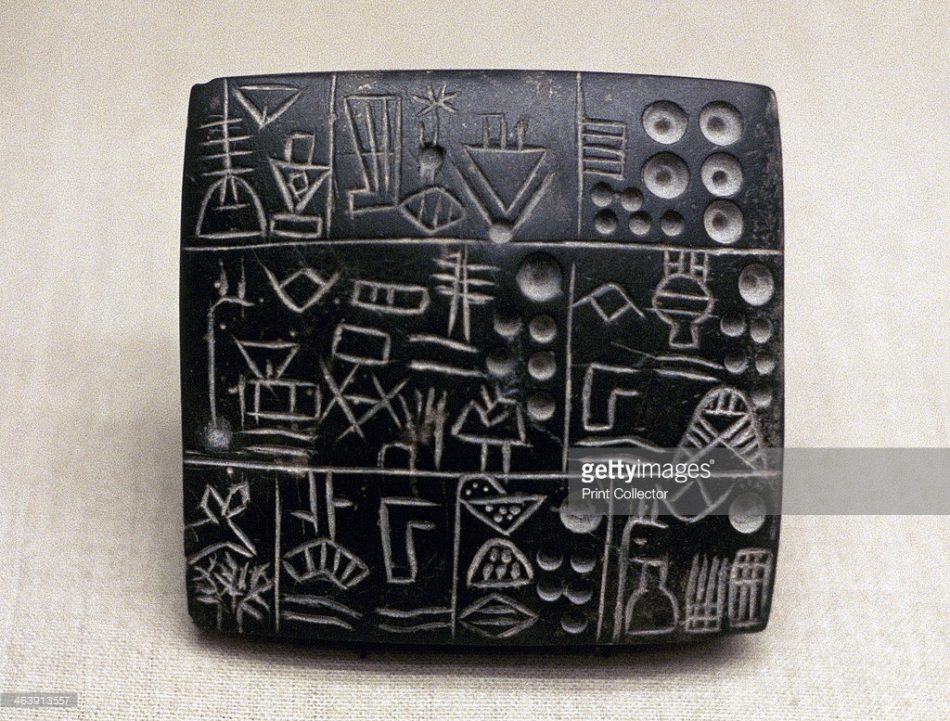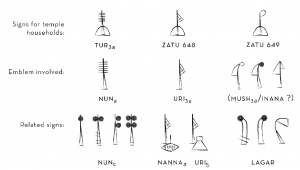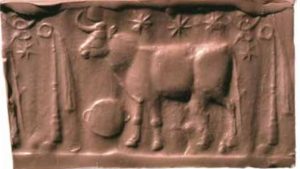Administrative tablet of clay, Mesopotamian/Sumerian, 3100-2900 BC. The earliest tablets with written inscriptions represent the work of administrators, perhaps of large temple institutions, recording the allocation of rations or the movement and storage of goods. The pictographs were inscribed into the tablet with a sharp instrument. From the Los Angeles County Museum of Art, California, USA. © Print Collector / Getty Images.
Note the first sign, which is the interesting one here, and how it appears as Mush/Inana (with hair or scarf, as noted by Woods), growing to the skies:
For an extensive review of early Sumerian languages, read this:
-
![[PDF]](https://www.eixdelmon.com/wp-content/plugins/papercite/img/pdf.png) C. Woods, Visible Language. Inventions of Writing in the Ancient Middle East and Beyond, C. Woods, E. Teeter, and G. Emberling, Eds., , 2010.
C. Woods, Visible Language. Inventions of Writing in the Ancient Middle East and Beyond, C. Woods, E. Teeter, and G. Emberling, Eds., , 2010.
[Bibtex]@Book{woods2010, author = {Woods, Cristopher}, title = {Visible Language. Inventions of Writing in the Ancient Middle East and Beyond}, year = {2010}, editor = {Woods, Cristopher \& Teeter, Emily \& Emberling, Geoff}, language = {English}, url = {http://oi.uchicago.edu/pdf/oimp32.pdf}, file = {woods2010.pdf:media/trismegisto/Vitamin/Documents/Bibliography/woods2010.pdf:PDF}, owner = {trismegisto}, timestamp = {2016-07-01} }
The map points to Kish (where several pictographic tablets were found), though this particular tablet might be from somewhere else.









